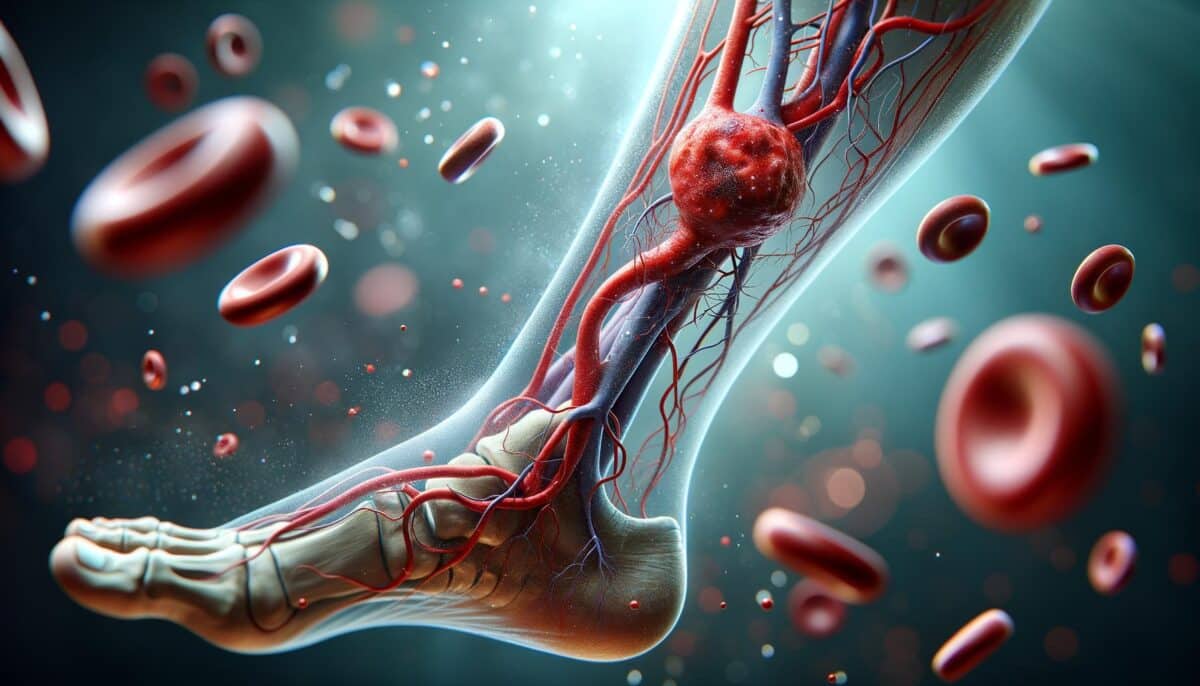What is a Leg Blood Clot?
A leg blood clot, commonly known as deep vein thrombosis (DVT), is a serious condition that occurs when a thrombus forms in one or more of the deep veins in your body, usually in the legs. This condition can be life-threatening because clots can break free and travel to the lungs, causing a pulmonary embolism. Understanding what a leg blood clot is and recognizing early signs are key to preventing complications.
Blood clots form when blood thickens and clumps together. They are beneficial when they develop in response to an injury to stop bleeding. However, clots that form when they are not needed can lead to severe medical issues. The veins in the legs are a common site for such clots, often due to prolonged periods of inactivity or underlying health conditions.
The formation of a leg blood clot often happens without an apparent trigger, although there are several risk factors including obesity, smoking, and certain genetic predispositions. Recognizing these factors and understanding how they might contribute to clot formation can help in managing risks better.
Leg Blood Clot Symptoms
One of the most crucial aspects of addressing leg blood clots involves recognizing their symptoms early on. Leg blood clot symptoms can vary depending on the location and the severity of the clot. Common signs include:
- Swelling in the affected leg, usually different from general swelling known as edema.
- Pain or tenderness in the leg, specifically when standing or walking.
- Red or discolored skin on the leg.
- A feeling of warmth in the affected area.
Recognizing these symptoms and seeking medical advice promptly can be potentially life-saving. It’s important to not ignore these signs as they can quickly evolve into more serious health issues like a pulmonary embolism, where the clot travels to the lungs.
Risk Factors for Developing Blood Clots
While anyone can develop a blood clot, certain individuals may be more susceptible due to various risk factors. These include prolonged bed rest or sitting, such as during long flights or car rides, which diminish blood flow in the legs leading to clot formation. Additionally, injury or surgery involving the veins, as well as a family history of blood clots, can significantly increase risk.
Other factors include pregnancy, which increases the pressure on the veins in the pelvis and legs, and taking oral contraceptives or hormone replacement therapy, both of which can increase blood’s clotting tendency. Medical conditions such as heart disease, inflammatory bowel disease, and cancer can also raise the risk considerably.
Understanding and acknowledging these risk factors allows for better preventative strategies and lifestyle adjustments, significantly reducing the likelihood of developing leg blood clots.
Preventative Measures and Treatment Options
Preventing leg blood clots involves making certain lifestyle choices and, in some cases, medical interventions. Regular exercise and maintaining a healthy weight are fundamental yet effective ways to reduce the risk of clot formation. It’s also essential to stay hydrated and avoid smoking, a known contributor to various vascular diseases.
For those at high risk, wearing compression stockings can improve blood circulation in the legs. Additionally, healthcare providers might prescribe anticoagulant medications or blood thinners to prevent clot formation in individuals with significant risk factors.
Treatment for an existing blood clot may include similar medications, as well as thrombolytics, which help dissolve clots. In severe cases, surgical interventions may be necessary to remove the clot and restore normal blood flow.
Living with and Managing Leg Blood Clots
Learning to live with and manage leg blood clots involves a proactive approach toward lifestyle and health monitoring. For those recovering from a blood clot, following medical advice and adhering to prescribed medications is critical. Regular follow-ups with healthcare providers help in monitoring any changes or developments.
A balanced diet rich in healthy fats, lean proteins, and plenty of fruits and vegetables can aid in maintaining optimal vascular health. Additionally, integrating regular physical activity tailored to individual capabilities keeps the blood flowing effectively.
Coping with leg blood clots also includes psychological support, as anxiety or fear about a recurrence is common among patients. Joining support groups or engaging in mental health counseling can provide robust support systems for managing these concerns efficiently.
Conclusion
Leg blood clots are a significant medical condition requiring awareness and proactive management. By understanding the symptoms and recognizing the risk factors, individuals can take preventive measures effectively. Consultations with healthcare professionals, alongside lifestyle modifications, play a crucial role in mitigating risks and enhancing overall health. Early detection and intervention remain key components in addressing this condition effectively and reducing associated health complications.
